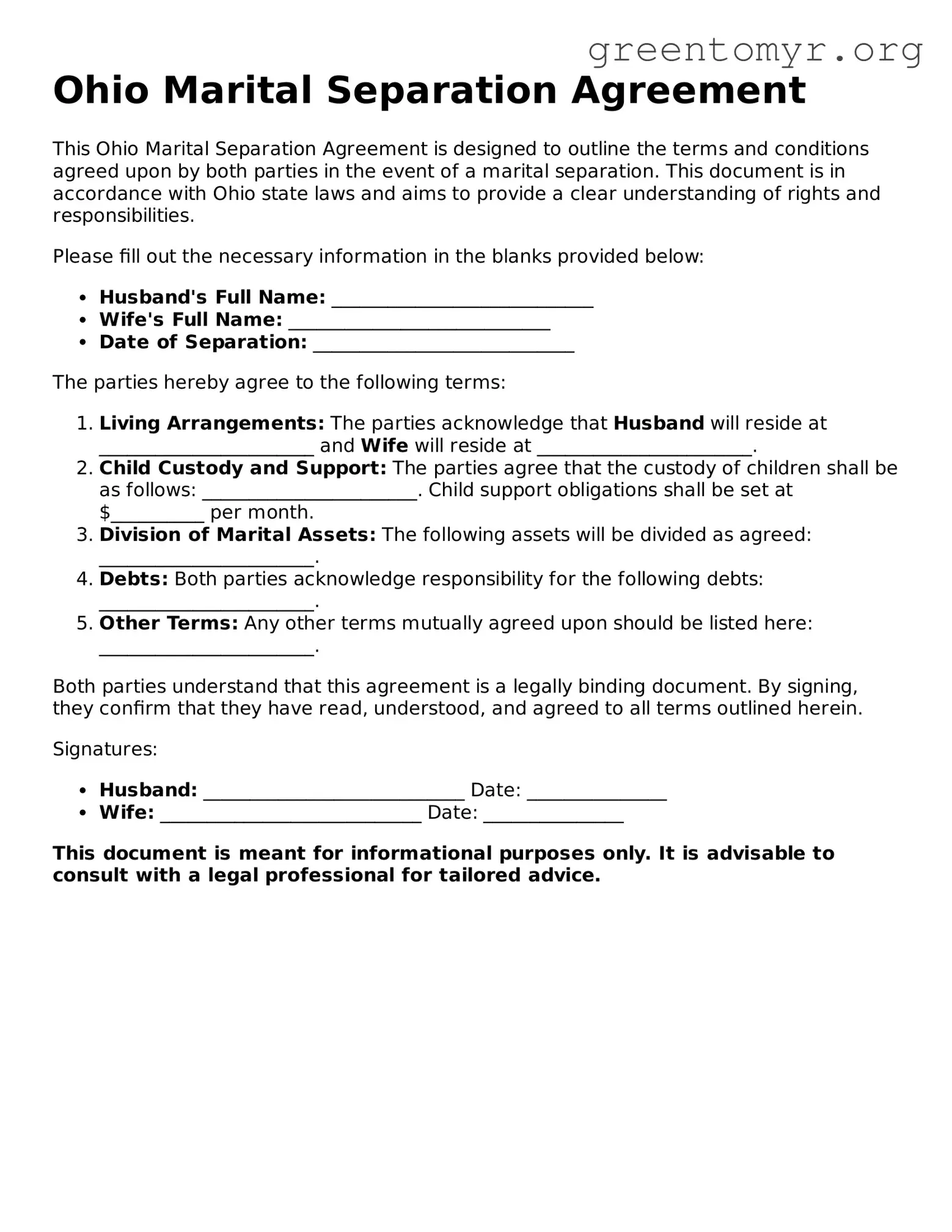Ohio Marital Separation Agreement
This Ohio Marital Separation Agreement is designed to outline the terms and conditions agreed upon by both parties in the event of a marital separation. This document is in accordance with Ohio state laws and aims to provide a clear understanding of rights and responsibilities.
Please fill out the necessary information in the blanks provided below:
- Husband's Full Name: ____________________________
- Wife's Full Name: ____________________________
- Date of Separation: ____________________________
The parties hereby agree to the following terms:
- Living Arrangements: The parties acknowledge that Husband will reside at _______________________ and Wife will reside at _______________________.
- Child Custody and Support: The parties agree that the custody of children shall be as follows: _______________________. Child support obligations shall be set at $__________ per month.
- Division of Marital Assets: The following assets will be divided as agreed: _______________________.
- Debts: Both parties acknowledge responsibility for the following debts: _______________________.
- Other Terms: Any other terms mutually agreed upon should be listed here: _______________________.
Both parties understand that this agreement is a legally binding document. By signing, they confirm that they have read, understood, and agreed to all terms outlined herein.
Signatures:
- Husband: ____________________________ Date: _______________
- Wife: ____________________________ Date: _______________
This document is meant for informational purposes only. It is advisable to consult with a legal professional for tailored advice.
